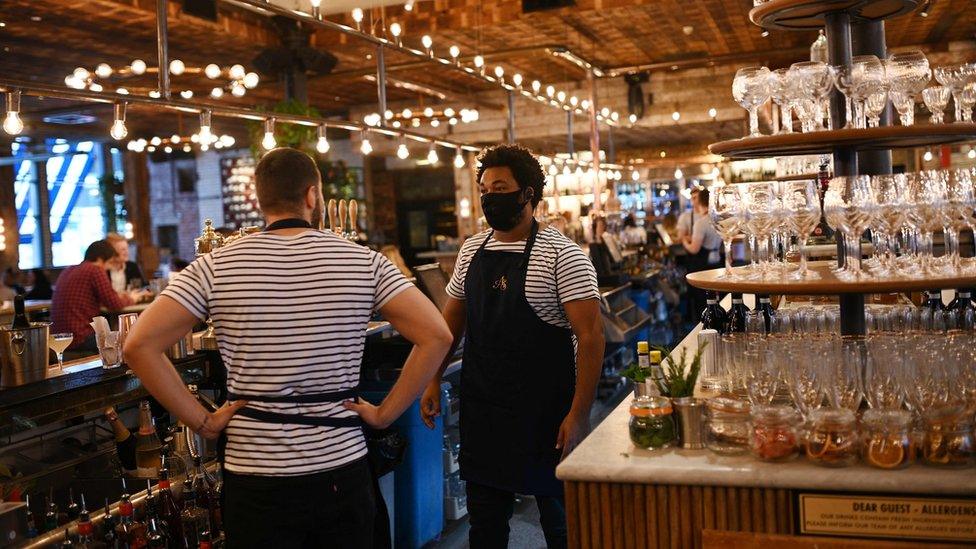Coronavirus: Social distance of 1m could preserve 30,000 NI jobs
- Published

UU research found the greatest number of jobs were at risk in retail and hospitality
The change in social distancing guidance from 2m to 1m could help preserve up to 30,000 jobs in Northern Ireland, new research suggests.
Ulster University economists have been examining which jobs have become most vulnerable due to the coronavirus pandemic.
They estimate that 240,000 to 280,000 jobs were classed as vulnerable under 2m social distancing, external.
That falls to 215,000 to 250,000 under the 1m guidance.
The economists, Richard Johnston and Ryan Hogg, used an economic model to estimate the vulnerability of 369 different occupations, based on factors such as the need to be in close proximity to others or to interact with the public.
The model also includes estimates of how the pandemic has reduced demand in different sectors of the economy.

The economists warned that reduced demand was a bigger factor than social distancing
Unsurprisingly, it found the greatest number of jobs were at risk in retail and hospitality.
The reduced social-distancing requirement will also have the greatest impact in those sectors.
The research suggests it would mean about 6,000 jobs in hospitality and 4,000 in retail would no longer be classed as vulnerable as a result of the change.
However, the economists warn that reduced demand is a bigger factor than social distancing.
"Whilst job vulnerabilities and the associated risk to the economy is mitigated partially by the reduction in social-distancing requirements, it is clear that demand is the key driver of vulnerability and therefore crucial to the ability of the economy to recover in the longer term," they said.
They suggest more government action will be required to help boost demand.
At a local level they suggest that could include policies such as rates relief for domestic ratepayers to increase disposable income.
- Published16 July 2020

- Published13 July 2020
